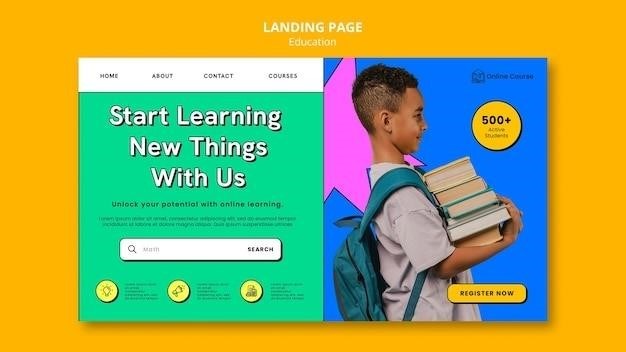Finding “HMH Into Reading 4th Grade PDF” Resources Online
Locating HMH Into Reading 4th Grade PDF resources online requires strategic searching. Utilize keywords like “HMH Into Reading,” “Grade 4,” and “PDF worksheets” across various educational platforms and online bookstores. Check official HMH websites, teacher resource sites, and online marketplaces for potential downloads or links to compatible materials.
Types of Available Resources
The availability of HMH Into Reading 4th Grade PDF resources varies greatly. While official PDFs directly from Houghton Mifflin Harcourt (HMH) might require purchase or access through a school subscription, numerous unofficial sources offer related materials. These include individual worksheets focusing on specific reading skills, like comprehension passages with accompanying questions and answer keys. Some websites provide collections of printable PDFs, often categorized by skill level or theme, offering a supplemental resource for classroom or at-home use. You might find complete unit plans converted into PDF format, though legality should be carefully considered. Remember, always check copyright information and usage rights before using any downloaded material.
Furthermore, some platforms offer interactive exercises, though these are less likely to be available as direct PDF downloads. Be aware that the quality and accuracy of unofficial resources can vary significantly. Always cross-reference information with trusted sources to ensure accuracy and appropriateness for your needs. Consider the source’s reputation and the alignment with the HMH curriculum before using any supplementary materials.
Reading Comprehension Passages and Worksheets
A core component of the HMH Into Reading 4th Grade curriculum centers around reading comprehension passages and accompanying worksheets. These resources typically present age-appropriate texts, ranging from fiction stories and poems to non-fiction articles and informational pieces. The passages are designed to engage fourth-grade students, often incorporating diverse themes and vocabulary to enrich their reading experience. The corresponding worksheets are crucial for reinforcing comprehension, employing various question types to assess understanding. These might include multiple-choice questions testing recall, open-ended questions promoting critical thinking, and vocabulary exercises building word knowledge.
Many worksheets integrate activities that go beyond simple recall. Students might be asked to identify the main idea, infer meaning from context, analyze character motivations, or compare and contrast different aspects of the text. The complexity of both passages and questions aligns with fourth-grade reading standards, providing a structured approach to improving reading skills. The availability of these resources, either through official HMH channels or supplementary materials, is a key element in successful reading instruction.
Fiction and Non-Fiction Texts
The HMH Into Reading 4th Grade program likely incorporates a balanced mix of fiction and non-fiction texts to cater to diverse learning styles and interests. Fiction selections might include engaging short stories, captivating poems, or excerpts from classic children’s literature. These fictional narratives expose students to imaginative worlds, varied character development, and diverse storytelling techniques, fostering creativity and a love for reading; Meanwhile, non-fiction texts offer opportunities to engage with factual information and develop critical thinking skills. These could range from informative articles about science or history to biographies of influential figures.
The inclusion of both genres is vital for well-rounded literacy development. Fiction cultivates empathy, strengthens vocabulary, and enhances comprehension of narrative structure. Non-fiction, on the other hand, builds research skills, introduces diverse subjects, and promotes factual accuracy. The combination provides students with a comprehensive reading experience, preparing them for the complexities of academic reading in later grades. By encountering both narrative and informational texts, students develop a broader understanding of language and its various applications. The carefully chosen texts within the HMH Into Reading program likely aim to provide a stimulating and informative reading journey for fourth-graders.
Focus on Comprehension Skills
The HMH Into Reading 4th Grade curriculum likely emphasizes a multifaceted approach to reading comprehension, going beyond simple recall. It probably incorporates various strategies to help students analyze texts critically and extract meaning effectively. This might include explicit instruction in identifying the main idea, supporting details, and author’s purpose. Students are likely taught to make inferences, draw conclusions, and synthesize information from different parts of the text. Furthermore, the program likely integrates activities that focus on vocabulary development, encouraging students to understand and utilize new words within context.
Activities might involve analyzing characters’ motivations, predicting outcomes, comparing and contrasting different perspectives, and identifying cause-and-effect relationships. The materials might also include questions designed to assess students’ understanding at different levels of Bloom’s Taxonomy—ranging from basic recall to higher-order thinking skills like analysis and evaluation. Ultimately, the goal is not just to read, but to understand, interpret, and apply the information gleaned from both fiction and non-fiction texts. By focusing on these varied comprehension strategies, HMH Into Reading aims to cultivate confident and capable readers.

Utilizing Online Resources Effectively
Online resources, when used judiciously, can significantly boost 4th-grade reading comprehension. Supplement classroom learning with interactive exercises and engaging online stories to enhance understanding and build fluency.
Printable PDF Worksheets
Printable PDF worksheets offer a versatile and accessible tool for enhancing fourth-grade reading comprehension. The convenience of readily available digital formats allows for easy distribution and immediate use, eliminating the need for time-consuming photocopying or manual creation of materials. These worksheets frequently come with answer keys, enabling self-assessment and independent learning, fostering a sense of responsibility and autonomy among students. Parents can utilize these resources to support their children’s learning at home, bridging the gap between school and home environments. The ability to print multiple copies allows for differentiated instruction, tailoring the level of difficulty to individual student needs. The wide availability of various worksheets targeting specific skills (e.g., vocabulary, main idea identification, inference) ensures that students receive targeted practice. Moreover, printable PDFs offer flexibility in terms of pacing; students can complete them at their own speed, ensuring a comfortable learning experience.
Benefits of Printable Worksheets
Printable worksheets offer numerous advantages in enhancing fourth-grade reading comprehension. Their immediate availability and ease of use make them a convenient resource for both teachers and parents, easily supplementing classroom instruction or providing additional practice at home. The structured format of worksheets helps students focus on specific reading skills, such as identifying the main idea, making inferences, or understanding vocabulary in context, leading to targeted skill development. Printable worksheets often include answer keys, allowing students to check their understanding and identify areas needing further attention, promoting self-directed learning and reducing the need for constant teacher intervention. The ability to print multiple copies caters to diverse learning styles and paces, allowing for individualized instruction. Furthermore, the tangible nature of printed worksheets can be beneficial for kinesthetic learners, providing a hands-on learning experience. The portability of printed worksheets allows for learning to occur in various settings, promoting flexibility and accommodating different learning environments.
Supplementing Classroom Learning
Printable resources, including PDFs aligned with HMH Into Reading, significantly enhance fourth-grade reading comprehension instruction. These materials offer valuable supplementary exercises that reinforce concepts taught in the classroom, providing students with additional practice and opportunities to solidify their understanding. Worksheets focusing on specific skills, such as identifying the main idea or distinguishing fact from opinion, can address individual learning gaps and cater to diverse learning needs within a classroom setting. The varied formats—from short stories to informational texts—expose students to different genres and writing styles, enriching their reading experience beyond the core curriculum. Furthermore, these supplemental materials can be easily integrated into differentiated instruction plans, providing tailored support for students who require extra help or enrichment activities. The flexibility of printable resources allows teachers to adapt lessons based on student progress and classroom needs, ensuring that all students receive the appropriate level of support to master essential reading skills.

Improving 4th Grade Reading Comprehension
Active reading strategies, such as summarizing and questioning, significantly boost comprehension. Regular practice with diverse texts and focused skill-building exercises are also crucial for progress. Utilizing online resources and printable worksheets can supplement classroom learning effectively.
Strategies for Active Reading
To enhance reading comprehension, encourage fourth graders to employ active reading strategies. These techniques move beyond passive reading and involve engaging actively with the text. One effective method is to have students pause periodically to summarize what they’ve read. This forces them to process the information and identify key points. Asking questions throughout the reading process is another valuable technique. Students should question the author’s purpose, the meaning of unfamiliar words, and the relationships between different parts of the text. Encouraging students to highlight or underline key details and main ideas helps them focus on crucial information. Visual aids such as mind maps or graphic organizers can aid in organizing complex information from the text, promoting understanding and retention. Furthermore, incorporating vocabulary-building exercises alongside reading enhances comprehension by equipping students with the necessary tools to understand complex words and phrases within the text. By actively engaging with the text in these ways, students develop a deeper understanding of the material.
Importance of Regular Practice
Consistent practice is paramount for improving fourth-grade reading comprehension. Regular engagement with varied reading materials strengthens comprehension skills significantly. This consistent practice builds fluency, allowing students to read more efficiently and focus on understanding the text’s meaning rather than struggling with individual words. The more students read, the more they encounter different writing styles, vocabulary, and sentence structures, expanding their understanding and comprehension abilities. Regular practice also strengthens the ability to identify main ideas, supporting details, and infer meaning from context clues. Incorporating diverse reading materials, such as fiction and nonfiction texts, exposes students to a wider range of writing styles and expands their knowledge base. Consistent practice allows students to develop and refine these strategies, leading to improved reading comprehension and a greater appreciation for reading as a whole. Furthermore, regular practice builds confidence and reduces anxiety often associated with challenging texts.
